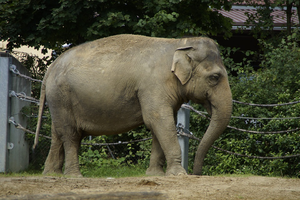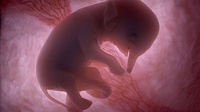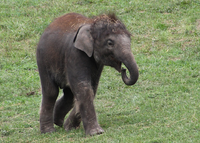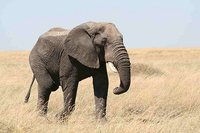Difference between revisions of "Elephant"
(→About Elephants) |
|||
| Line 56: | Line 56: | ||
| style="height:20px; width:400px; text-align:center;" |'''Purpose''' | | style="height:20px; width:400px; text-align:center;" |'''Purpose''' | ||
|- | |- | ||
| − | | style="height:20px; width:200px; text-align:center;" |A trunk | + | | style="height:20px; width:200px; text-align:center;" |A trunk |
| style="height:20px; width:400px; text-align:center;" |To pick leaves from [[tree]]s and to take in [[water]] for drinking. | | style="height:20px; width:400px; text-align:center;" |To pick leaves from [[tree]]s and to take in [[water]] for drinking. | ||
|- | |- | ||
| Line 83: | Line 83: | ||
| style="height:20px; width:400px; text-align:center;" |'''Purpose''' | | style="height:20px; width:400px; text-align:center;" |'''Purpose''' | ||
|- | |- | ||
| − | | style="height:20px; width:200px; text-align:center;" |A trunk | + | | style="height:20px; width:200px; text-align:center;" |A trunk |
| style="height:20px; width:400px; text-align:center;" |To pick leaves from [[tree]]s and to take in [[water]] for drinking. | | style="height:20px; width:400px; text-align:center;" |To pick leaves from [[tree]]s and to take in [[water]] for drinking. | ||
|- | |- | ||
| Line 110: | Line 110: | ||
| style="height:20px; width:400px; text-align:center;" |'''Purpose''' | | style="height:20px; width:400px; text-align:center;" |'''Purpose''' | ||
|- | |- | ||
| − | | style="height:20px; width:200px; text-align:center;" |A trunk | + | | style="height:20px; width:200px; text-align:center;" |A trunk |
| style="height:20px; width:400px; text-align:center;" |To pick leaves from [[tree]]s and to take in [[water]] for drinking. | | style="height:20px; width:400px; text-align:center;" |To pick leaves from [[tree]]s and to take in [[water]] for drinking. | ||
|- | |- | ||
Revision as of 15:45, 20 April 2019
Key Stage 1
Meaning
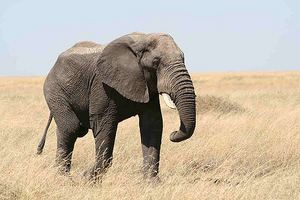
A picture of an elephant.
An elephant is a large grey animal with 4 legs and a trunk.
About Elephants
- The trunk on an elephant is a very long nose.
- An elephant can grow two very long teeth called tusks.
Examples
| This is a picture of an African elephant. | This is a picture of an Indian elephant. |
Key Stage 2
Meaning
An elephant is a grey mammal with 4 legs and a trunk.
About Elephants
- As a mammal elephants:
- A young elephant is called a calf.
- Elephants usually live in a grassland or savanna habitat.
| An elephant's skeleton showing its backbone. |
Lifecyle of an Elephant
| Foetus | Young | Adult |
| An elephant starts its life inside the mother getting its food through the umbilical cord. | When a elephant has been born it cannot eat so it gets milk from its mother to survive. This 'young' is an elephant calf. | An adult elephant is mature and can have it's own offspring. |
Adaptations of Elephants
| Adaptation | Purpose |
| A trunk | To pick leaves from trees and to take in water for drinking. |
| No hair | To keep cool in its hot habitats. |
| Tusks | To defend against predators. |
Key Stage 3
Meaning
An elephant is a grey mammal with 4 legs and a trunk.
About Elephants
- As a mammal elephants:
- Are vertebrates
- Feed their offspring with milk.
- Give birth to live young.
- Keep a constant internal temperature.
Adaptations of Elephants
| Adaptation | Purpose |
| A trunk | To pick leaves from trees and to take in water for drinking. |
| No hair | To keep cool in its hot habitats. |
| Tusks | To defend against predators. |
Key Stage 4
Meaning
An elephant is a grey animal with 4 legs and a trunk in the class; mammal.
About Elephants
- As a mammal elephants:
- Are vertebrates
- Feed their offspring with milk.
- Are viviparous.
- Are homeotherms.
Adaptations of Elephants
| Adaptation | Purpose |
| A trunk | To pick leaves from trees and to take in water for drinking. |
| No hair | To keep cool in its hot habitats. |
| Tusks | To defend against predators. |
